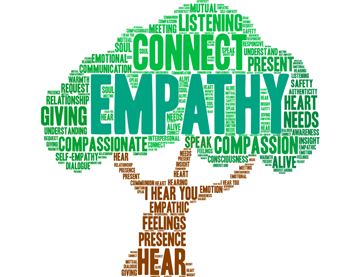Banner Image

I read an article on mental health that quoted “we have to stop pulling people out the river,
Instead, we need to go upstream to see why people are falling in” and this resonates with so many challenges we face in life, including bullying. If bullying is happening in our classrooms the question is less on how to handle class bullies but more on how to prevent bullying from happening in the first place.
Schools and educators have a responsibility to create a safe, inclusive, and healthy learning environment. Identifying disrespect, intimidation and bullying in any form needs to be prevented.
The challenging thing about bullying is that this destructive behaviour presents in many forms. It can be emotional or physical intimidation and occurs within student social groups and online. Bullying has lasting effects and there are many active steps schools, parents and students can take to prevent this negative behaviour. If we want to increase awareness and prevention in schools, workplaces, and in our homes, we need to actively promote respect and kindness.
Here are a few strategies you can use to instil empathy and potentially prevent socially unacceptable behaviour in your classroom.
Educate
We educate our students on how to do maths, science, and geography, why not educate them on bullying and how this behaviour affects others. Let your students know the school’s policy on bullying, outline the consequences and address the different forms of bullying. Often when we know
what it looks like we can identify what’s happening and what steps we can take to get help or report this behaviour. We need to strive to empower the bystanders in your classroom and encourage them to stand up against bullying or to report it to you or another adult.
Often the fear of standing out socially is what allows a bully to perpetuate this destructive behaviour. Let your students know that they can report bullying incidents confidentially and that it’s a safe environment to do so. The main point is that students should know bullying is not acceptable and will not be tolerated in any form.
Know What Bullying Looks Like
Being able to recognise the signs and effects of bullying is important. Sarcasm, making direct or personal jokes and being dismissive could all be subtle forms of bullying. Having the knowledge to identify anti-social behaviour patterns helps teachers to address negative behaviour before it escalates into more serious acts of disrespect.
Often boys and girls experience bullying differently. Both boys and girls could experience online or cyberbullying bullying which is a whole new area to navigate and transcends all barriers. Typically, boys’ resort to physical bullying; girls are likely to experience relational bullying for example not being included in social groups. Just be aware that kids who bully are opportunistic when targeting other students. Bullies will likely bully when they know they are not watched, and victims are often afraid or embarrassed to report that they are being bullied.
Empowering Students
to act responsibly, identify unhealthy relationships and reach out when it happens is a powerful tool to stop the cycle. Engaging with parents is a great way to encourage a whole community approach and increase awareness. If you have a bullying prevention program at your school, get the parents involved to start this important conversation.
Connect with your Students
One of the reasons why bullying may persist is that students are not sure or may not feel like they have a safe space to chat with someone or experience social pressure not to speak out. So, strive to build a rapport with all your students and be sure to make it safe for them to alert you to a potential issue. Get to know them as individuals it's much easier to spot changes in behaviour when you know the “normal”. Take the time to find out about their interests and goals and if they are struggling, offer support or direct them to school resources where their specific needs can be met.
Respond to Bullying Immediately
When you spot bullying, address it right away. This is a big deal and by not dealing with an incident straight away will make students less likely to feel safe in school and the bullying will likely escalate because it's not perceived as a serious offence. When you have a bully in your classroom, this impacts the entire class, not just the victim, so create a team atmosphere where everyone feels like they belong, and the students will learn to support one another. Developing a culture that holds students who bully accountable creates safer spaces for everyone.
Prevent it!
Often, we look at just the bully and the victim diagnosing why it happened looking at the student’s home life, emotional and social triggers. One way in which we can decrease the opportunities for a bully to exist is by nurturing your student’s self-worth, build their self-confidence and by teaching your students to stand up for what they believe in, it decreases the possibilities of a bully preying on students who do not feel empowered to stand up against acts of bullying.
Bullying is repeated hurtful behaviour that involves a real or perceived power imbalance. Its purpose is to deliver physical or psychological harm to another person. If you are experiencing any intimidation, however subtle or extreme, seek help. Talk to your teacher, co-workers, support groups, parents, family, or friends. This behaviour is Not ok, and neither is it acceptable. Remember bullies are only as powerful as we allow them to be.
